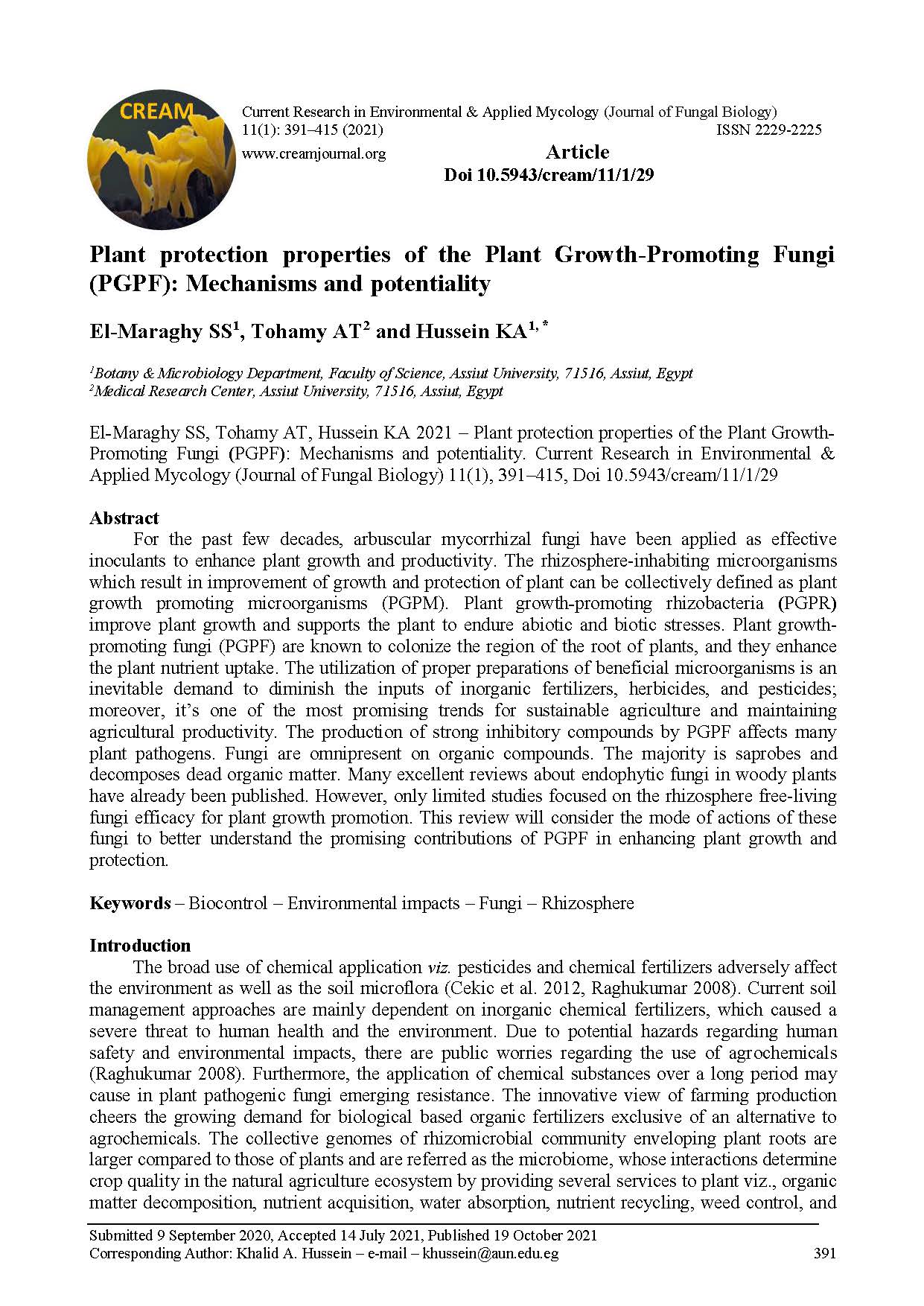Optimization of enzymatic saccharification of fucoidan and alginate
from brown seaweed using fucoidanase and alginate lyase
from the marine fungus Dendryphiella arenaria
Abstract
Fucoidanase and alginate lyase are promising biocatalysts for several biotechnological applications. The sequentially extracted
fucoidan and alginate from the brown macroalgae Sargassum latifolium were used for the optimization of a cost-effective culture
medium for fucoidanase and alginate lyase production by the marine fungus Dendryphiella arenaria. Plackett–Burman statistical
design was conducted for initial determination of the importance of 11 independent variables on enzyme potentiation, and the
significant variables were further optimized using Box–Behnken design. The optimum conditions for fucoidanase production
were fucoidan (1.5% w/v), NaCl (1.5%), urea (0.3%), and incubation period (2 days), which gives ~ 4 U mL−1 of crude
fucoidanase. While, alginate (1.5% w/v), NaCl (4%), NH4Cl (0.3%), and incubation period (6 days) were the optimum conditions
that enhanced alginate lyase production to ~ 24 U mL−1
. Additionally, a new protocol for the enzymatic saccharification of
fucoidan and alginate was optimized using Box–Behnken design with respect to substrate concentration, enzyme dosage, and
temperature. The enzymatic saccharification of citric acid-extracted fucoidan gave a maximum yield of reducing sugar
365 mg g−1 fucoidan, while the alkali-extracted alginate gave 439.66 mg g−1 alginate. The results showed that the two enzymes
could be exploited for the efficient production of reducing sugars from fucoidan and alginate, which are the key substrate for
producing biofuels from brown macroalgal biomass


